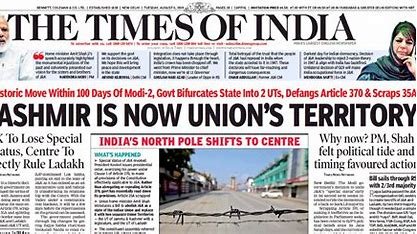I worship all Rajputs and Yadavas in India, because I regard all Rajputs as descendants of Lord Ram, just as I regard all Yadavas as descendants of Lord Krishna.
So I was very happy when a Rajput, Yogi Adityanth, became Chief Minister of UP ( my home state ).

And now I am very happy because a Yadav, Mahant Balaknath, is likely to be Chief Minister of my ‘nanihal’ Rajasthan.
My mother was from Alwar in Rajasthan ( Mahant Balaknath’s constituency ), and I have many maternal relatives in Jaipur, and other cities of Rajasthan.
I think this idea of having sadhus or mahants as Chief Minister of states is a great idea. Such a Chief Minister will ensure that the people remain on the righteous path, and not go astray. If they do go astray, a bulldozer or two will soon set them right. And if even that doesn’t work, an encounter will surely solve the problem, once and for all.
So one by one in all states we must install as CM some descendant of some god ( or if a descendant is not traceable, a sadhu or mahant will do ).
The first thing such a CM should do would be to paint all cities and villages in his state in saffron or bhagwa ( the beginning can be made with the ‘Pink City’, Jaipur, which can be renamed as ‘Gerua City’ ). This will keep the minds of the residents permanently fixed on higher, spiritual, matters, thus ensuring moksha for them, instead of wasting time focusing on useless, mundane matters like poverty, unemployment, malnutrition, price rise, etc.
Thereafter, the next step should be to build in every town, mohalla, village etc in India a ‘bhavya mandir’ ( like the Ram Mandir being built in Ayodhya ) for whichever god or goddess the local people have faith in, whether Ram, Krishna, Hanuman, Shiva, Parvati, Sita, Ganesh, Murugan, Kali, Durga etc. This will ensure work for everyone in the country, thus wiping out unemployment.
Thereafter, to check population growth, bhajan kirtan sammelans, akhand hawans, and melas should be organised everywhere, and these should continue all night, so that the minds of men and women are diverted from carnal desires to higher spheres. The virtues of ‘brahmacharya’ can also be propagated.
‘Ghar waapasi’ and ‘shuddhikaran’ squads should be organised and set up everywhere to bring back to the fold those whose forefathers went astray. In this connection help can be taken from experts like Yati Narsinghanand of Dasna temple, Ghaziabad, who converted Wasim Rizvi ( now Jeetendra Narain Singh Tyagi )
The Muslim names of all cities, roads, villages, etc in India should be changed to Hindu names ( as was done to my home town Allahabad )
And lastly, demolition and restoration drives should be started on a massive scale everywhere to demolish Gyanvapi mosque in Varanasi, Shahi Masjid in Mathura, Jama Masjid and Quwwat-ul-Islam mosque in Delhi, Taj Mahal in Agra, Teele Waali Masjid in Lucknow, Atala Devi mosque in Jaunpur, and the 50,000 or more other former Hindu temples which were forcibly converted, and restore these sites as Hindu temples ( preferably by using the Babri Masjid modus operandi ).
Once we have done all this, India will truly become free



